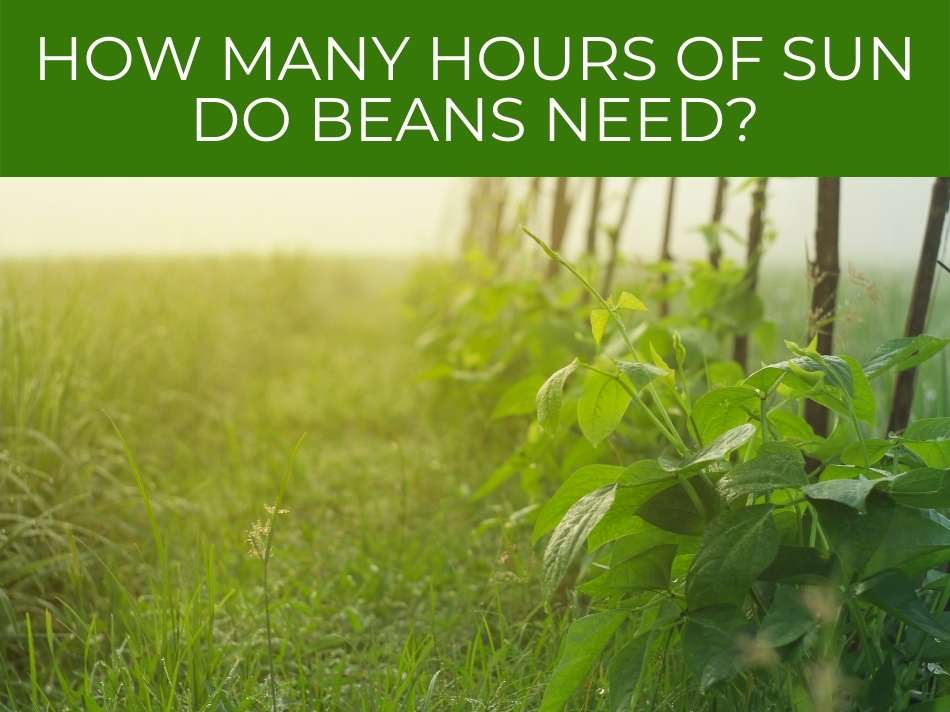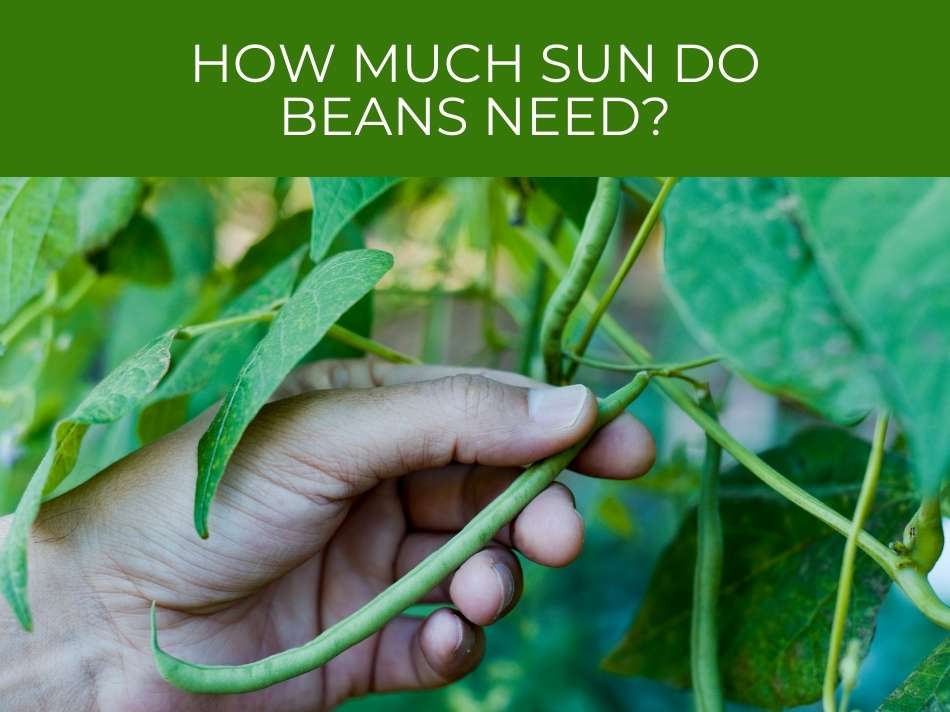Beans are good for us and good for the environment. Beans and sun is one of those relationships that cannot fail. When bean plants get enough sun, they provide protein and energy for humans, and put nitrogen back into the soil, which provides important minerals for plants to grow.
Beans are a warm season crop and need sun in which to grow. They should ideally receive between 8 – 10 hours a day. Some varieties of bush beans have a shorter growing season and can grow in the shade. In contrast, pole beans have a longer season and will need more sun.
Beans are an important food source all over the world, and they get most of their energy for growth from the sun. Despite this, they need enough, but only enough, of the correct kind of sunlight.

How much sun do beans need?
Beans need direct sunlight in which to grow and should preferably receive 8 to 10 hours a day. This makes beans a warm season crop, growing during the summer, with longer days and more sun.
All types of beans need full sun in which they can grow successfully.
In fact, they need at least 8 hours of sun each day.
Preferably, though, they should get as much as 10 hours a day.
Beans are a warm-season crop, which means they must grow during the summer months.
This is when there is enough light for them to grow.
It also means the soil will be warm enough for the seeds to germinate properly and for the plants to continue growing.
Despite needing a lot of full sun, bean plants can get burnt and may wilt if the temperatures are too hot and they get the full 10 hours or more of sun a day.
There are always exceptions and different types of beans can tolerate different amounts of sunlight.
Bush beans have a relatively short growing season and can grow with less than 8 hours of light a day.

Pole beans, on the other hand, need more light to feed them during their longer growing season.
If both these types of beans do get 8 to 10 hours of sunlight a day, they will grow more quickly and their yields will be higher.

Will beans grow in the shade?
Although beans need direct sunlight to grow best, there are some that can grow and produce a crop in the shade. These are bush beans, rather than pole beans. The growth of the plants may be stunted, though, and their yield is not as high.
Bean plants can begin their lives with little sunlight, as long as they are warm.
This means that bean seedlings can grow in the shade.
In fact, too much direct sunlight is harmful to young bean plants, so it is better to keep them out of too much direct sun.
Once the plants are established, they may grow in the shade.
However, they won’t produce as many beans as those that grow in full sunlight.
Bean plants are particularly sensitive to the amount of sunlight they receive while growing.
If they don’t get the correct amount of sun, they are unlikely to yield as good a crop as if they grow in the correct conditions.
This means that bean plants can stay alive and even grow quite well in the shade, but you should expect an inferior crop of beans to harvest.
Some types of beans can grow in shade better than others.
Bush beans will do better than pole beans, because they grow quite quickly and can do with less light.
Pole beans, on the other hand, produce beans later in the season and need sunshine throughout their growth process.
The sunlight gives the plants the energy they need, which they won’t get enough of if they grow in the shade.
Did you know that beans are a very useful crop and a good source of nitrogen in the soil?
Find out if you should soak beans before planting.

How many hours of sun do beans need?
Bean seedlings and young plants need about 6 hours of sunlight a day. More light can harm the plants. The more mature plants require at least 8 hours of direct sunlight a day. They will do even better, though, if they can get 10 hours.

Bean seeds need warm soil to germinate, rather than light.
When they are seedlings they should get about 6 hours of sunlight a day.
The amount of direct sunshine they receive will help to warm up the soil.
However, if the temperature is very high, it can harm the plants.
Once the bean plants are established, they need no less than 8 hours of sunlight a day.
Preferably, they should be planted in a space where they can receive even up to 10 hours.
If the beans are grown in an area that receives as little as 6 hours of sunlight a day, there will not be a high yield of the crop.
See whether beans are a fruit or vegetable.

Can beans get too much sun?
Although beans need full sunlight to grow, they can get too much sun. Young plants, in particular, can be harmed by a lot of direct light. If temperatures are high and they stand in full sun, older plants can wilt and the beans develop sunscald.

Depending on how old a bean plant is, it will be more tolerant of sunlight.
Young bean plants, especially those that are going to be transplanted into the garden, are particularly sensitive to the sun.
If they receive too much direct sunlight, the plants will wilt.
If they are left alone, they could die.
Even a mature bean plant can get too much sun.
This is in dry and hot conditions, when the ground becomes too dry for normal growth.
An excess of sun can also result in beans developing sunscald.
This is essentially as though the beans have been sunburnt.
You will notice brown or red spots on the upper leaves of the plant.
Where this happens, you will need to protect the plants from too much sun, either by moving them or covering them.
If the bean plants can’t be protected, they will eventually be killed by the sun.

Do green beans grow well in partial shade?
All bean plants grow best in direct sunlight. However, bush beans have a shorter growing season and can grow quite healthily in partial shade. Their growth may be stunted and the crop may not be as big as if the beans grow in full sun.
Beans grow best in direct sunlight.
In fact, they need at least 8 hours, or more, of sun a day.
This amount of light is necessary for a bean plant to grow well and produce a good yield.
Some types of beans will tolerate less light, which means they can grow in partial shade.

Bush beans can do with less light than pole beans, because they have a shorter growing season and a higher average yield.
If you plant beans in partial shade, then choose bush beans.
However, even these varieties will do better in direct sunlight than in the shade.
With less light, the growth of the plants themselves may be stunted and the yield will be reduced.

Conclusion
All bean plants should get between 8 and 10 hours of direct sunlight to grow most efficiently.
There are some varieties of beans that can grow with less light and may be planted in the shade.
Generally, though, it can mean stunted growth and a lower yield.
On the other hand, too much sun, especially when the temperatures are high, can damage the plants and even burn the beans themselves.

